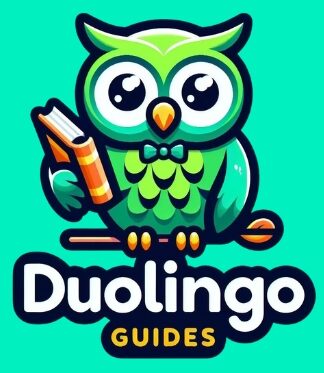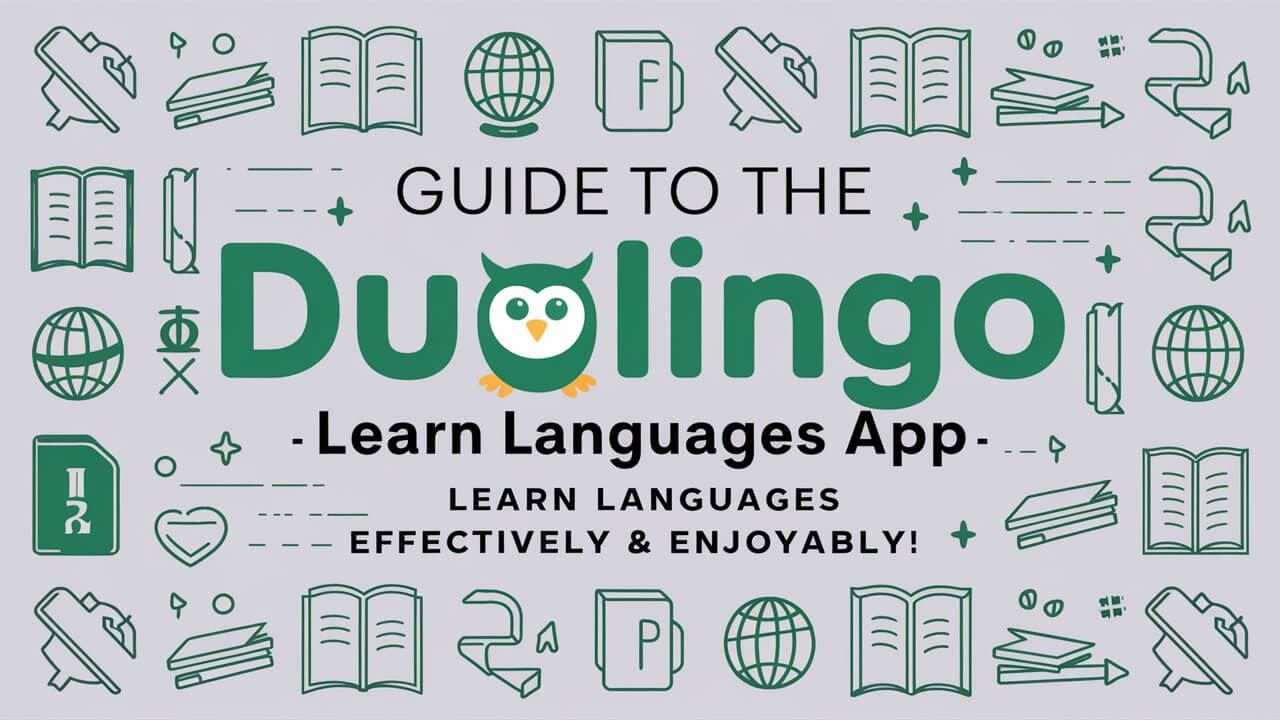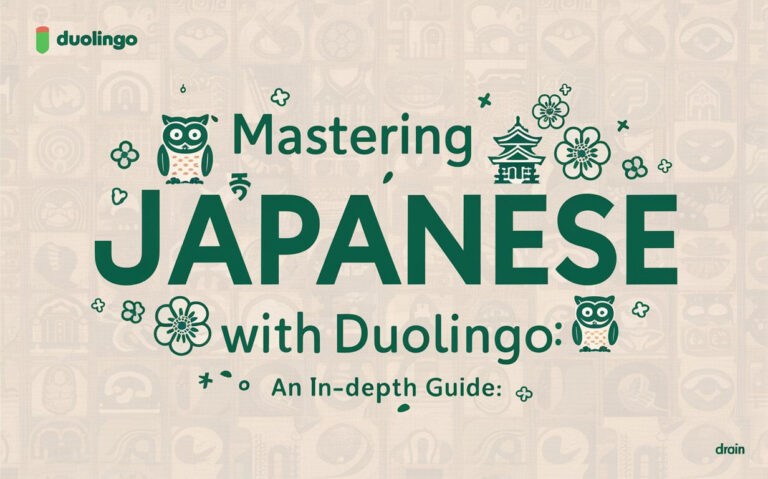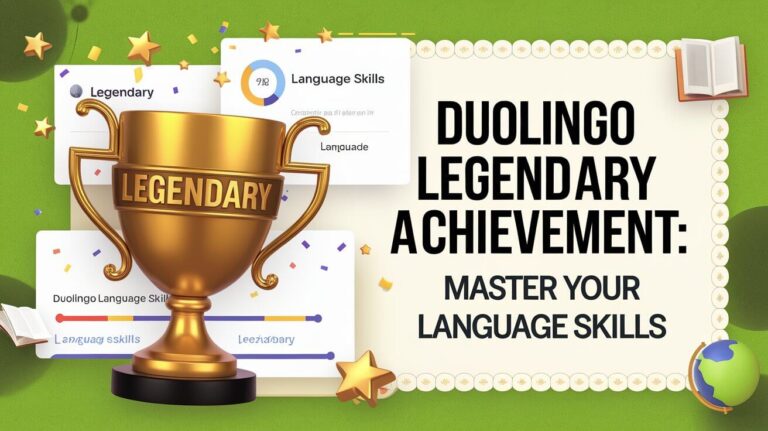In our increasingly globalized world, learning a new language opens doors to enriching personal and professional opportunities. However, traditional classroom settings and language courses can often feel tedious, expensive, and disconnected from real-world applications. This is where the Duolingo app comes in – revolutionizing the way millions acquire new languages through its fun, gamified approach.
But is the Duolingo app truly effective for language learning? The short answer is yes – when used consistently and combined with other learning resources, Duolingo can help build solid foundations across reading, writing, listening, and speaking skills.
This guide explores its unique teaching approach, available courses, key features, research on effectiveness, expert tips for optimal use, the company’s story, and its impact on language education. Whether you’re a beginner or refreshing skills, you’ll learn how to leverage Duolingo’s power to improve your linguistic abilities.
What is the Duolingo App?
Duolingo is a free language learning app that takes a radical departure from traditional rote methods. It transforms the process into an engaging, game-like experience filled with bite-sized lessons, quirky characters, and a sense of delightful discovery.
At its core, Duolingo employs principles of gamification – leveraging elements like points, rewards, level progression, and friendly competition to motivate and reinforce consistent practice. Short lessons expose you to new vocabulary and grammar rules through interactive exercises like translation challenges, listening comprehension, speaking practice, and more.
The true genius of Duolingo lies in its adaptive technology. As you use the app, it analyzes your strengths, weaknesses, and learning patterns to personalize future lesson plans – a tailor-made curriculum optimized for your individual needs. This powerful algorithm, combined with frequent reinforcement through review sessions, helps cement your understanding.
While Duolingo is free to download and use, it offers an optional “Super Duolingo” subscription that unlocks additional features like unlimited lives, personalized coaching, offline course downloads, and an ad-free experience.
How Does the Duolingo App Work?
When you first launch Duolingo, you’ll choose which language you wish to learn (or refresh). The app then walks you through placement tests to gauge your existing proficiency and customizes your learning path accordingly.
From there, your language journey resembles an immersive course divided into bite-sized “skills” covering concepts like basic phrases, present tense verbs, adjectives, and more. Each skill consists of several mini-lessons comprised of engaging exercises and challenges.
As you complete lessons accurately, you’ll earn experience points (XP) that level up your skills and unlock new ones. Make too many mistakes, though, and you’ll burn through your “lives” – forcing you to revisit earlier concepts before progressing. This built-in review reinforcement helps knowledge stick.
The types of exercises vary to keep things engaging:
- Translation Challenges: Translate words, phrases, or sentences between your target language and native tongue.
- Multiple Choice: Select the correct word(s) to complete a phrase or sentence.
- Speaking Practice: Use your device’s microphone to record yourself speaking target phrases.
- Listening Comprehension: Listen to audio clips and type out what you hear.
As you accumulate lingots (Duolingo’s virtual currency earned through consistent practice), you can make in-app purchases like outfit upgrades for the app’s friendly mascot, Duo the Owl. You can also join clubs with friends or strangers, creating friendly competition via leaderboards and chatting about language tips.
What Languages Can You Learn on Duolingo?
One of Duolingo’s major strengths is its extensive selection of language courses. While many competitors focus solely on the most widely spoken global tongues, Duolingo caters to an incredibly diverse range of learners.
As of 2024, Duolingo offers courses for over 40 languages spanning popular choices like:
- Spanish
- French
- German
- Italian
- Japanese
- Mandarin Chinese
- Arabic
- Russian
- Portuguese
But it also provides learning paths for less common languages with relatively fewer learning resources, such as:
- Irish
- Hawaiian
- Navajo
- Welsh
- Scottish Gaelic
- Yiddish
- Klingon (from Star Trek)
- High Valyrian (from Game of Thrones)
Whether you’re preparing for world travel, connecting with heritage languages, or embracing your inner nerdy fandom, Duolingo likely has an offering to pique your linguistic curiosity.
Is Duolingo Good for Learning Less Common Languages?
While Duolingo shouldn’t be your only resource for obscure language acquisition, many learners find it tremendously valuable – especially when supplementing limited in-person class options.
The app’s biggest perk is making these less-traveled linguistic roads significantly more accessible through:
- Structured, affordable coursework available anytime, anywhere
- Game-like engagement promoting consistent practice
- Bite-sized lessons reducing overwhelm by complex grammar/alphabet
- Connect with global communities of fellow learners
Duolingo courses for less common languages may not be as comprehensive or regularly updated, and may lack extra features like stories and podcasts, so personal study and immersion are crucial to achieve advanced proficiency.
What Are the Key Features of Duolingo?
While Duolingo’s core draw is making language acquisition entertaining through gamification, the app is packed with handy features encouraging consistent habit formation and tangible skills development:
Daily Reminders & Streak Tracking: Few things are as demotivating as enthusiasm fizzling out due to life’s hectic pace. Duolingo combats this by nudging you with friendly reminders to maintain your learning streak – accruing longer streaks unlock achievement badges and bonus lingots. A smart move capitalizing on human psychology!
Leaderboards & Social Sharing: Harness the power of friendly competition by joining Duolingo Clubs with friends, classmates, coworkers, or strangers. Compare your daily XP earnings and language mastery via leaderboards, or simply share progress updates to solicit encouragement.
How Do Duolingo’s Leaderboards and Social Features Work?
Duolingo’s leaderboard system pits you against up to 50 other users grouped into a “league” based on similar language learning levels. Every week, you’ll compete to earn the most experience points through consistent practice.
Top scorers will progress into higher-level leagues next week, while lower scorers may be demoted – providing ongoing motivation to maintain your skills through repetition. You can also create or join “clubs” to compete against specific groups like friends, classmates, or coworkers.
Beyond leaderboards, the app lets you post on club message boards to share accomplishments, ask questions, or encourage fellow learners. These social dynamics create a sense of community often lacking in solitary language programs.
Podcasts & Stories: Once you’ve built a basic foundation, Duolingo reinforces your reading, writing, and listening comprehension skills through bite-sized podcasts and story snippets narrated by native speakers at a conversational pace. These are great for experienced learners craving more immersive practice beyond solo exercises.
Progressional Intelligence & Review Sessions: Behind the scenes, Duolingo studies your response patterns to pinpoint linguistics areas you’re struggling with and automatically reintroduces those concepts into future lessons for spaced repetition review. This intelligent scaffolding helps cement your strengths while shoring up weaknesses.
Multilingual Interface: For beginner-friendly ease, you can configure the Duolingo app interface to display instructions and menus in your native language as you start your journey. As proficiency grows, switch to full immersion in your target tongue!
In short, Duolingo bundles an arsenal of clever features encouraging you to embrace long-term language habits through rewarding, bite-sized steps – something conventional programs often lack.
Is the Duolingo App Free?
Yes, Duolingo remains completely free to download and access its core learning functionality on both mobile and web platforms. However, the app operates on a “freemium” pricing model, generating revenue through:
- Advertisements: Free users will periodically encounter ad breaks between lessons or modules. These ads help offset Duolingo’s operating costs while keeping the core learning experience free.
- Super Duolingo Subscription: While completely optional, Duolingo offers premium memberships starting at $12.99/month (or discounted pricing for annual billing). Super Duolingo removes ads and unlocks bonus features like unlimited mistake lives, progress quizzes, and offline course downloads.
How Much Does the Super Duolingo Subscription Cost?
Here’s a quick breakdown of Duolingo’s current subscription pricing tiers:
- Super Duolingo: $12.99 per month
- Super Duolingo Family Plan: $9.99 per month for up to 6 family members
- Annual Super Duolingo: $83.99 per year (about $6.99 per month)
While entirely optional, many dedicated learners find the Super subscription worthwhile for an ad-free experience, infinite resets on lesson mistakes, monthly XP goal tracking, and offline downloads.
Is Duolingo Effective for Learning Languages?
The million-dollar question – can you truly gain meaningful language proficiency solely through an app like Duolingo? The short answer is…sort of.
Independent research studies assessing Duolingo’s effectiveness have presented a mixed bag of conclusions. On the one hand, the app undoubtedly excels at increasing vocabulary acquisition, basic grammar comprehension, and reading/writing skills for beginner to intermediate learners.
A 2022 study published in Foreign Language Annals found that adult users who completed Duolingo’s Spanish course achieved comparable reading and listening proficiency to university students after four semesters of traditional classroom instruction.
However, the same study noted critical deficiencies in higher-level areas like advanced grammar, spontaneous conversation abilities, comprehending complex texts/audio, and overall speaking confidence after Duolingo alone.
What Are the Pros and Cons of Using Duolingo?
Like any language tool, Duolingo has its strengths and limitations worth considering:
Pros:
- Fun, gamified approach promoting consistent practice
- Bite-sized lessons make building a daily habit easy
- Free accessibility on mobile/web for all levels
- Caters to obscure language options beyond Spanish/French
- Smart review system cements weaker areas
- Language podcasts and stories for intermediate learners
Cons:
- Lacks applied grammar instruction beyond basics
- No human feedback or conversation practice
- Need to combine with other resources for true fluency
- English speakers may struggle with non-Latin alphabets
- Limited customization for individual goals/interests
The consensus seems to be that Duolingo serves as an excellent foundational program for complete beginners or refreshing rusty skills. But it shouldn’t be the exclusive resource if pursuing advanced, real-world proficiency.
How to Get the Most Out of Duolingo
To supercharge your Duolingo learning experience and attain maximum results, consider these expert tips and strategies:
Set a Concrete Goal: Whether it’s prepping for world travel, conversing with relatives, or taking an exam, get clear on your “why” for learning the language. This motivating purpose will propel you through inevitable plateaus.
Establish a Routine: Consistent practice is crucial for Duolingo’s algorithm to work its magic. Dedicate a specific time each day, even if just 15-20 minutes, to make steady progress and maintain streaks.
Join Clubs/Leverage Social Features: The friendly peer competition and community support from joining a Duolingo club helps users stay engaged and accountable over the long haul.
Combine With Other Resources: Supplement your Duolingo foundations with a healthy mix of reading materials, audio programs, tutoring sessions, conversation practice, and full cultural immersion when possible. A diversified approach hits all proficiency angles.
Customize Your Learning Path: While Duolingo’s curriculum does the heavy lifting, feel free to strategically test out modules already in your wheelhouse to accelerate your pace. Or enable the web version’s “Crowns” mode for more repetitions in shaky skill areas.
Take Advantage of Duolingo Stories/Podcasts: Don’t neglect these comprehension-boosting exercises once you’ve reached intermediate levels. They’re invaluable for transitioning to conversational comfort.
Should You Only Use Duolingo or Combine It with Other Resources?
For the best Duolingo results and well-rounded skills growth, combining it with complementary materials like the following is highly recommended:
- Language learning books/apps for grammar instruction
- Authentic texts/audio from native media sources
- Conversational practice (tutors, meetups, language partners)
- Memorization tools for vocabulary expansion
- Full cultural immersion through travel when possible
Duolingo is a great starting point, but it has limitations. It doesn’t offer advanced grammar explanations or real-time conversation practice.
Think of Duolingo as the ultimate free, habit-forming virtual tutor instilling foundational knowledge. However human interaction, applied usage opportunities, and supplemental study materials remain crucial final ingredients for true mastery.
Duolingo for Schools and Classrooms
In addition to benefiting individual learners, Duolingo has developed specialized educator tools making the app a powerful resource for classroom foreign language instruction.
The Duolingo for School’s platform allows teachers to:
- Monitor individual and overall class progress through quantitative data reports
- Provide personalized feedback through annotated lesson breakdowns
- Assign custom homework tailored to student needs
- Award virtual “classroom currencies” to incentivize engagement
- Find supplemental activities and lesson plan inspirations through Duolingo’s curriculum library
Many teachers appreciate Duolingo’s classroom integration for making language acquisition more gamified, data-trackable, and seamlessly blending app activities with traditional lessons.
Students tend to embrace Duolingo eagerly too. The app’s bite-sized, story-driven approach caters to modern attention spans and varied multimedia learning styles – a far cry from dry textbooks and rote memorization.
Duolingo for Schools is a tech solution that helps make language education more effective, measurable, and engaging worldwide.
Duolingo’s Other Language Learning Tools
While the core Duolingo app represents the company’s flagship product, they’ve steadily expanded into other digital language solutions:
What is the Duolingo English Test?
The Duolingo English Test (DET) is an affordable, on-demand online assessment measuring comprehensive English proficiency across reading, writing, speaking, and listening comprehension.
Unlike traditional standardized tests, the DET utilizes advanced AI adapting its questions in real-time based on each test-taker’s ability level. Its convenience and innovative tech have made it an increasingly popular certification option for universities, employers, and immigrant applicants worldwide.
Duolingo ABC: Launched in 2020, this free app teaches young children (ages 3-6) the fundamentals of reading, writing, and literacy through educational games and interactive stories. Currently offered in English and Spanish.
Duolingo Math: Applying Duolingo’s signature bite-sized, game-based pedagogy to STEM education, this course helps kids and adults alike bolster their arithmetic, algebra, and general numeracy skills.
Duolingo Music: Just unveiled in 2023, Duolingo’s newest vertical allows users to learn music theory, sight-reading notation, and play simple songs on their device – no instrument required! An innovative way to gamify music education.
As evidenced by this diverse suite of offerings, Duolingo appears focused on becoming an all-encompassing learning ecosystem leveraging its proven engagement tactics across multiple disciplines.
The Business Model and Growth of Duolingo
Despite being “free” to use its core functionality, Duolingo has evolved into an extremely lucrative operation valued at over $3.15 billion as of 2023.
The company generates revenue through a strategic combination of advertising, premium subscription sales, corporate partnerships (like Duolingo for Schools), and certification testing fees. It’s an increasingly formidable “edutainment” brand.
Duolingo’s staggering worldwide popularity is a testament to its founders’ vision and distinctive gamification approach. As of Q3 2023 earnings reports, the app boasts:
- Over 600 million total registered users globally
- 5 million premium “Super Duolingo” subscribers
- 14.2 million daily active users across all platforms
- Availability in over 40 languages with 100 total courses
From its humble origins as a Carnegie Mellon University research project in 2009, Duolingo has undergone multiple funding rounds attracting investments from top VC firms like Union Square Ventures, Google Capital, and Drive Capital.
Much of this growth stems from Duolingo’s leveraging of viral internet humor and strategic marketing stunts capitalizing on its “Duo” mascot’s quirky cult following.
How Does Duolingo Make Money as a “Free” App?
While Duolingo offers its core gamified lessons for free across mobile and web, the company’s primary revenue streams include:
Advertising: Free users will periodically encounter advertisements interspersed between lessons and activities. The app also promotes sponsored brand content in its stories and podcasts.
Duolingo Plus Subscriptions: Premium paid tiers like “Super Duolingo” unlock benefits like unlimited mistake revives, ad-free experiences, offline course downloads, monthly progress tracking, and various interface customizations. As of 2023, over 5 million users subscribed to these paid plans.
Certification Programs: Duolingo’s English Test has become an increasingly popular and affordable certification exam option for universities, employers, and immigration authorities worldwide. Test fees likely represent a significant recurring revenue stream.
Duolingo for Schools/Education Partnerships: By licensing its branded curriculum, teaching tools, and custom language assessments to school districts, colleges, and corporate training departments, Duolingo can monetize its intellectual property at scale.
In-App Purchases: While relatively minor, users can optionally spend real money on virtual goods like character customizations, bonus learning rewards, and power-ups within the app’s gamified environment.
Overall, Duolingo has adeptly blended various monetization channels under a broader software-as-a-service (SaaS) business model – generating revenue from consumer subscriptions, certifications, institutional partnerships, and unobtrusive in-app advertising. This diversified approach underpins the tech company’s impressive growth trajectory and $3 billion+ valuation.
Duolingo in Popular Culture
Due to Duolingo’s ubiquity, cheeky marketing persona, and signature forest green owl mascot named “Duo,” the language learning app has cemented itself as a full-fledged cultural phenomenon in recent years.
The app maker has actively leaned into meme culture by exaggerating Duo’s overly intense commitment to users maintaining their daily practice streaks. From passive-aggressive reminder notifications to ominous threats of consequences for missing a lesson, Duolingo’s social media channels routinely satirize the experience through humorous skits and user interactions.
This self-aware willingness to poke fun at itself has only amplified Duolingo’s brand identity and mainstream popularity. Countless Duo memes, jokes, and parodies across TikTok, Twitter, Reddit, and beyond have cultivated a uniquely engaged community of fans and critics alike.
Beyond meme-fueled internet omnipresence, Duolingo’s cultural cachet has expanded into:
Mainstream TV/Film Appearances: The language app has been directly referenced or parodied on popular shows like NBC’s Saturday Night Live, Netflix’s Big Mouth, and Apple TV’s Ted Lasso. It’s become comedy writers’ favored shorthand for overly intrusive, AI-driven personal coaching.
Merchandise and Brand Partnerships: Playing into its avid young adult following, Duolingo has collaborated with retailers on Duo-themed clothing lines, plush toys, school supplies, and accessories. A natural progression considering its immense social shareability.
Celebrity Endorsements: High-profile personalities like Dua Lipa, Shakira, and the Obamas have publicly praised Duolingo’s innovative approach to making language education accessible and engaging for the digital era.
Whether you find Duo’s nagging endearing or annoying, there’s no denying Duolingo’s incredible success at crafting a distinct brand personality elevating it from yet another education app into a veritable cultural institution. Where many brands awkwardly chase meme potential, Duolingo has authentically embodied it.
The Future of Duolingo
As the world’s preeminent language learning platform rapidly expands across disciplines like math and music education, Duolingo shows no signs of slowing its ambitious roadmap.
Capitalizing on advancements in artificial intelligence, speech recognition, and adaptive algorithms, the company is doubling down on delivering hyper-personalized learning experiences tailored to each user’s goals, aptitudes, and pace. AI “tutors” may eventually offer real-time, simulated conversations to elevate speaking practice.
Duolingo has additionally prioritized building its certification credentials and institutional partnerships to further penetrate academic and professional spheres. Its English proficiency test could become the global standard for immigration, higher education admissions, and workplace assessments worldwide.
On the consumer front, the app will likely invest heavily in extended reality (XR) technologies blending augmented/virtual elements with immersive game-like environments. Imagine interacting with holographic instructors, exploring simulated towns to apply conversational skills, or gamifying musical instrument tutorials through delightfully rendered animations.
Duolingo’s masterful use of meme-worthy branding and creature comforts like Duo are also poised to spearhead ambitious expansions into tangential merchandise, media, and community-driven ventures fostering global connection through language and culture appreciation.
Considering its humble origins as a Carnegie Mellon research project just over a decade ago, Duolingo’s pioneering vision and ability to evolve language education for the digital age has positioned it as an iconic ed-tech leader thinking years ahead of the curve.
In Conclusion,
The Duolingo app represents a truly revolutionary force democratizing language learning through its masterful fusion of bite-sized education, gamification, and global community building. While no replacement for full immersion, its research-backed foundations provide an unparalleled starting path for beginner linguists or those just maintaining linguistic faculties.
From humble software to a multibillion-dollar, artificially intelligent tech juggernaut, Duolingo’s successful journey exemplifies how bleeding-edge innovations can captivate the world simply by making education delightfully accessible to all. Where the iconic green owl guides us next promises to reshape how we collectively acquire knowledge in the digital age.







